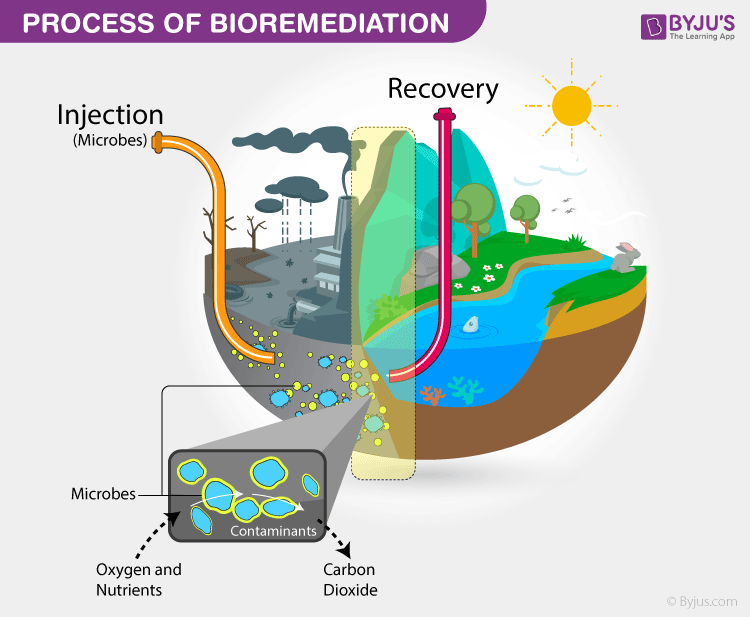Introduction
The environmental challenges facing our planet are undeniable. Pollution, whether it be from industrial waste, agricultural runoff, or other sources, poses a significant threat to the delicate balance of ecosystems worldwide. However, amidst these challenges, there is hope. Biotechnology, in the form of bioremediation, is emerging as a powerful tool to combat environmental pollution. In this blog post, we’ll delve into the world of bioremediation, exploring its applications, benefits, and the incredible potential it holds for cleaning up our polluted environments.
Understanding Bioremediation
Bioremediation is a fascinating field that harnesses the power of living organisms, such as bacteria, fungi, and plants, to break down or neutralize pollutants in the environment. Unlike traditional methods that involve physically removing contaminants, bioremediation works with nature’s own processes to clean up polluted sites. Let’s take a closer look at some key aspects of bioremediation:
Microbial Cleanup: One of the most widely used forms of bioremediation involves the use of microorganisms like bacteria and fungi. These microorganisms have the remarkable ability to metabolize various pollutants, converting them into less harmful substances. For example, certain bacteria can break down petroleum hydrocarbons found in oil spills, turning them into harmless compounds.
Phytoremediation: This technique utilizes plants to remove, degrade, or immobilize contaminants in the soil or water. Plants like sunflowers, willows, and poplars are known for their ability to absorb heavy metals from the soil. They can be used to clean up contaminated sites, making them suitable for redevelopment.
Biodegradable Polymers: Biotechnology has also enabled the development of biodegradable polymers that can replace traditional plastics. These polymers are designed to break down naturally, reducing the long-term impact of plastic waste on the environment.
Genetic Engineering: Advances in genetic engineering have opened up new possibilities for enhancing the efficiency of bioremediation processes. Scientists can modify the genes of microorganisms to make them better suited for specific cleanup tasks. This targeted approach can significantly accelerate the remediation process.
Applications of Bioremediation
The applications of bioremediation are vast and extend to various types of pollution and contaminated environments. Here are some notable areas where biotechnology is making a difference:
Oil Spill Cleanup: Oil spills in oceans and water bodies are catastrophic events that can have long-lasting ecological and economic impacts. Bioremediation techniques, such as the use of oil-eating bacteria, have been successfully employed to mitigate the damage caused by oil spills.
Land Remediation: Contaminated land is a common issue, often resulting from industrial activities. Bioremediation methods can help restore these sites by breaking down or removing pollutants from the soil, making it safe for agriculture or redevelopment.
Wastewater Treatment: Municipal and industrial wastewater contains a plethora of pollutants. Bioremediation plays a crucial role in wastewater treatment by utilizing microorganisms to digest organic matter, remove nutrients, and eliminate harmful chemicals.
Heavy Metal Cleanup: Toxic heavy metals like lead, mercury, and cadmium can persist in the environment for centuries. Phytoremediation, using metal-accumulating plants, is an eco-friendly approach to removing these contaminants from soil and water.
Radioactive Waste Management: Bioremediation techniques are being explored for the cleanup of radioactive waste sites. Certain microorganisms can immobilize or extract radionuclides from contaminated areas.
Benefits of Bioremediation
The adoption of bioremediation comes with a host of benefits that make it an attractive choice for environmental cleanup:
Environmentally Friendly: Bioremediation is a sustainable and eco-friendly approach. It doesn’t involve the use of harsh chemicals or mechanical processes that can further damage ecosystems.
Cost-Effective: In many cases, bioremediation is more cost-effective than traditional cleanup methods. It requires fewer resources and can be applied in situ, reducing the need for transporting contaminated materials.
Minimizes Disruption: Traditional cleanup methods often involve excavation and removal of contaminated materials, which can be disruptive. Bioremediation can be conducted on-site, minimizing disruption to the surrounding area.
Long-Term Solutions: Bioremediation often results in long-term solutions, as the pollutants are broken down or rendered harmless. This reduces the risk of recontamination in the future.
Versatility: Bioremediation can be tailored to address specific contaminants and environments. It is a versatile approach that can be applied in a wide range of situations.
Challenges and Considerations
While bioremediation holds immense promise, it’s essential to acknowledge the challenges and considerations associated with its implementation:
Time-Intensive: Bioremediation processes can be time-consuming, especially for complex contaminants. It may take months or even years to achieve desired results.
Site-Specific: The success of bioremediation depends on the type of pollutant, environmental conditions, and the specific microorganisms or plants used. It’s not a one-size-fits-all solution.
Regulatory Compliance: Depending on the location and scale of the cleanup, regulatory approvals and permits may be required, adding to the complexity of the process.
Monitoring and Maintenance: Bioremediation projects often require ongoing monitoring and maintenance to ensure the effectiveness of the remediation process.
Conclusion
Biotechnology, through the innovative field of bioremediation, is providing us with powerful tools to address the environmental challenges of our time. From cleaning up oil spills to restoring contaminated land and water, bioremediation offers sustainable, cost-effective, and environmentally friendly solutions. As we continue to develop and refine these biotechnological approaches, we move one step closer to a cleaner and healthier planet. It’s clear that bioremediation is not just a scientific endeavor; it’s a beacon of hope for a more sustainable future.


